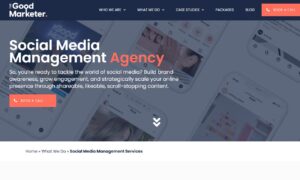Introduction:
You know the old adage, “measure twice, cut once?” Well, when it comes to printing, the same principle applies. A lot of people might think that printing is a relatively straightforward process, but when you really dig in and start exploring the many options available to you—from paper types to inks and everything in between—it can quickly become overwhelming.
But don’t worry—you don’t have to be a printing wizard to create something awesome! With a few tips and tricks up your sleeve, you can get creative with your prints like a pro. And that’s what we’re here for! In this article, you’ll find a range of top-notch printing tips designed to help you get the most out of your next project. Let’s dive in.
Choose the Right Paper for Your Projects:
When it comes to printing projects, choosing the right paper is one of the most important elements. The type of paper you choose can make a huge difference in the quality and appearance of your prints. So, if you want to get creative with your printing projects, selecting the correct paper is an absolute must!
There are a few factors to consider when choosing the right paper for your project, such as weight, color, and finish. If you’re looking for a thicker paper for brochures or postcards, consider a heavier paper such as cardstock. If you’re printing photos or artwork, glossy papers are ideal for vibrant colors and increased detail. There are also papers with textured finishes that can add an interesting element to your project.
Once you’ve chosen the right paper for your project, you’ll be ready to get creative and get your work printed!
Selecting the Right Ink for Your Prints:
When printing at home or in a professional setting, one of the most important decisions you need to make is what type of ink you’ll be using. Different inks will produce different results, so you must take your print’s purpose into consideration before making a final selection.
Here are some tips for getting the right ink:
- Get the correct type – If your printer uses ink cartridges, make sure to use only compatible cartridges. Also, check the manufacturer’s recommendations on what type of inks are suitable for the printer and task.
- Choose a quality brand – Spending a bit more on higher-quality ink may save you money in the long run as it will produce better results and last longer.
- Know which colors are needed – If you don’t have a color printer, you might be able to get away with using just black ink. However, if your prints require full color and vibrancy, make sure to ensure that you’re using the right kind of colored inks for your project.
Understand How Color May Affect Your Print:
When it comes to printing, you need to understand how color may affect your ultimate product. The type, intensity and depth of the colors being used in the design can greatly influence the end result—so it pays to know a little bit about color theory.
The way in which colors may interact with one another, in terms of both their physical qualities and the associations we have with them, can play a critical role in creating a successful design. For instance, red and green may clash if used together but be complementary when used as an accent.
It is important to keep color consistency in mind when developing a design. The best way to ensure accuracy is to work with a Pantone Matching System (PMS) or International Color Consortium (ICC) profile when designing. Doing so will guarantee that the colors you see on your screen are accurately relayed in print.
Similarly, different types of printing processes have limitations on the color range they can produce. For example, four-color process printing is generally limited to lighter tones and cannot achieve accurate metallic or fluorescent tints—whereas digital printing can reproduce those shades much more easily.
Considering these factors ahead of time can help save you time and money down the road by ensuring that you get the results you want from your printed material!
Consider the Scale of Your Printing Project:
When it comes to printing, the sky’s the limit—but what you don’t want to do is forget about scale. No matter how creative you get with your printing project, it’s important to consider the size of your project and if it suits your needs.
For example, if you’re creating a poster to hang up in an office, then you’re probably better off going with a smaller size paper and less vibrant colors. But if you’re printing a billboard to draw attention from passersby, then a larger paper size with more vibrant colors is likely your best bet.
Whether you go big or small for your printing project, there are some other things to consider:
- Resolution: Make sure your resolution is high enough that all the finer details of your artwork are visible.
- Materials: Consider what kind of materials make sense for your project—cardstock for business cards or waterproof vinyl for outdoor signs are great options.
- Finishing touches: Look into adding special touches like embossing, foiling or die-cutting for added flair and texture.
Doing a little research ahead of time can help ensure that whatever you print looks great and sparks interest in anyone who sees it!
Preparing Your File for Printing:
Printing is all about the details. You can have the best ideas in the world, but if your file isn’t set up correctly, you’re going to end up with a poor-quality print. So make sure to prep your files correctly before sending them off to be printed.
Here are some tips for preparing your file:
Resolution:
Make sure that the resolution of your file is 300dpi for optimum printing quality. Anything lower than this, and you won’t get sharp images and clear text.
Bleed:
For best results, use a 0.125in bleed around the edges of your design to ensure that there’s no white border at the edges when it’s printed out.
Color Mode:
If you’re using graphics or images in your design, make sure to save them in CMYK color mode. That way they’ll look exactly how you want them when they’re printed out—no surprises there! If you use RGB or Pantone colors instead, they may look different when they’re printed out than how they appeared onscreen.
File Format:
Make sure that you save your design as a PDF file before you send it off to be printed—this will help keep everything nice and neat so it prints perfectly! And don’t forget to include a copy of any fonts that you’ve used in case the printer doesn’t have them installed on their computer system.
Taking a few extra steps to prepare your file for printing will pay off in spades when it comes time for printing…you’ll be able to have confidence that what you see onscreen is what will come out of those printers!
The Best Ways to Save Money on Prints:
When it comes to printing, it can be hard to know the best ways to save money without sacrificing quality. Here are some top tips for getting the most bang for your buck:
Choose the right paper:
Choosing the right paper is key to saving money on prints. Generally, heavier papers are more expensive and glossy papers are higher quality than matte papers, but you’ll have to weigh up what kind of look you’re going for. If you’re printing large volumes then you can usually get away with cheaper paper stock that still looks great – just make sure it’s high enough quality that it won’t get crumpled when folded or sent through the mail.
Go digital:
If you want to get creative with your prints then digital printing is the way to go. Digital printers use computers and inkjet technology which means you can print onto a wider range of surfaces and materials than traditional printing methods allow. This means more creative freedom and more options for saving money – plus, digital prints are usually much faster too.
Look out for deals:
No one likes spending more than they need to, so keep an eye out for deals on great-quality paper and inks – online printer resellers sometimes run promotions where you can buy in bulk at discounted prices, which can really help save in the long run. Just make sure to check reviews first so that you know exactly what kind of product you’re getting before committing – no one wants a nasty surprise!
Conclusion:
Whether you’re printing out photos or documents, taking a few extra steps to ensure you get the best quality prints can make all the difference. From printing on the right type of paper to explore the right settings, these top-notch printing tips can help you get creative and make the most out of the prints you produce. With a little extra effort, you can ensure the prints you make are professional-looking and will stand the test of time.



































